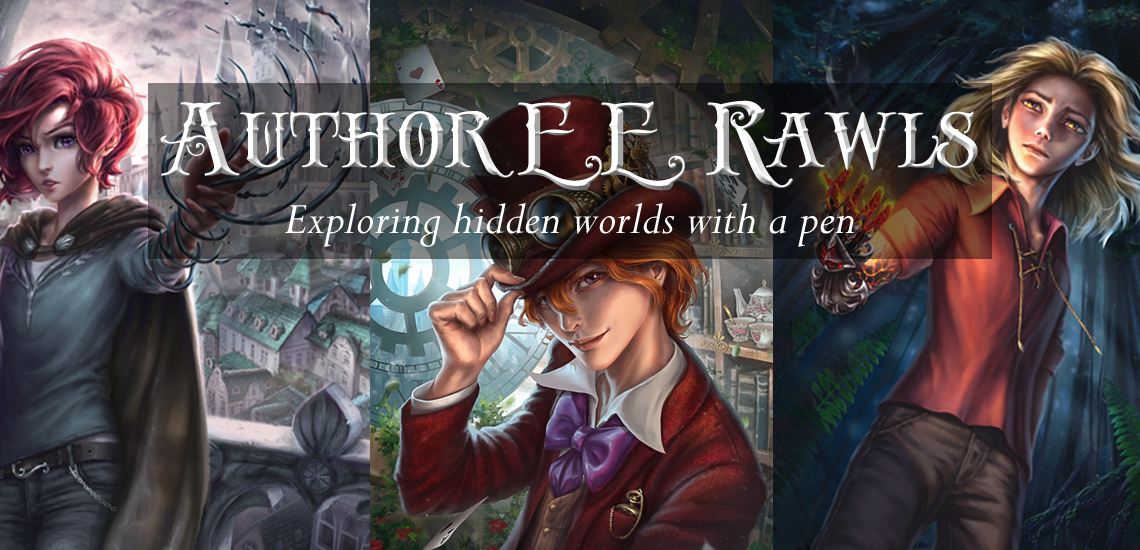Interior Tips & Tricks
Designing the interior of your book for print can be a complicated and time-consuming process. It has taken up a lot of my time, and I still find myself going back and tweaking things. But hey, it’s the part of your book that everybody is going to be reading, so, it is well worth while to make it look as best and professional as you can!
I followed Walton’s: Build Your Book Guide and thumbed through my own library of books at home to get a feel for what styles most authors in my genre are using.
Basic Interior Front Matter:
- Blank back-front page (optional)
- Half title page/blank back, or frontispiece, or other books list by the author
- Title page/Copyright page on back of Title page
- Dedication page (optional)/blank back
- Preface, Foreword, or the Introduction
- Table of Contents/blank back, unless the ToC is more than 1 page long
*Some books have a blank page at the very beginning and sometimes made of a thicker paper, with a duplicate at the very end of the book. This is something I noticed with the majority of hardcover books; however, it appears to be optional with paperbacks. So do what suits your style best!
*The Half Title page should be a small duplicate of the same design and style as your title in the Title page, only lacking the author name and other tidbits. Think of it as a mini version of your Title: it looks the same, only somewhat smaller. On the back of the page, you can either leave it blank or add a list of other books written by you.
*The Title page bears the title, subtitle, author name, editor, translator, and publishing house. Choose a different font and style for the title versus the subtitle, to make each stand out separately. Note the title will be larger than the subtitle.
*The Copyright page basics: Either the word “copyright” or “©”, or both together, the year of publication, and the name of the copyright owner of the work. Below this, most publishers put “All Rights Reserved”. In addition you can add the ISBN, and who it is designed by, and the country of manufacturing, and the edition number. Example:
COPYRIGHT © 2014 BY ELIZABETH RAWLS
ALL RIGHTS RESERVED
Designed by Elizabeth Rawls
Printed in the United States of America
First Edition
I centered this on the lower half of the page. To create the © symbol: hold down the ALT key and type the numbers 0169 with your keyboard’s numeric keypad, located on the right.
*The Preface, Foreword, or Introduction can be numbered if it is long, but this is optional. If you do decide to number this, do like the Pros and use a different style of numbering, such as roman numerals. This sets the section apart from the rest of your book and looks professionally designed. If this section is only 2 pages long, however, I would recommend not numbering.
*I wanted to use dot lines for my ToC, to connect from the poem titles to the page numbers. I followed these simple steps
All of the front matter, except maybe the Preface, etc. is never numbered. Keep in mind that books begin on the right page, so all titles and headings should be on an uneven number. Remember to place blank pages where needed.
Tricks with Table of Contents:
I’ve noticed some books use only chapter and number headings instead of putting an actual “name” to each chapter—this can keep the reader guessing as to what’s going to happen next and prevent them skipping ahead and figuring the story plot out. Then, I came across books which did not even have a table of contents, at all! The reason? It got me thinking, and here are my thoughts on tricks to use for your ToC:
–If the book contains 35+ chapters, not having a ToC may be a good way to keep potential readers from getting exasperated or shocked—they might feel the book is too long and that it’d take them forever to get through. However, your book may only be 280 pages long, with each chapter about 7 or 8 pages long. But the reader may not take the time to consider that because they are overwhelmed by the huge amount of chapters. In the case, it may be wise to omit the ToC, and let the readers judge the book’s length based on the total number of pages and how it feels in their hand, instead of jumping to conclusions.
–If you are like me, and your novel truly is very, very long, around 500+ pages, you will need to use a different trick. The novel I am currently editing will easily have 40+ chapters and each near 10 pages long. So, to keep potential readers from getting overwhelmed, I’m thinking of using a tactic some long fantasy novels use. Instead of omitting the ToC, you want there to be something there that will reassure the reader that, despite how heavy the book is in their hand and the 500+ pages, it will all be worthwhile! In place of chapter “numbers” use chapter “titles”, with cool and intriguing names that will spark interest in the reader’s mind and make them want to read on.
Chapter One
Chapter Two
versus
“Beginnings”
“A New World Awaits”
For me, I find the named chapters far more interesting and appealing than simple numbers, when the book is a heavy and thick novel.
Shorten long chapters: Because my chapters are long, I add in break points. This allows your book to not feel as long and drawn-out for the reader–I know I always appreciate it when the author does it for a book I’m reading. I use symbols like the asterisk for major break points, and a simple return (blank line) for lesser breaks.
To conclude, consider your options and what audience you are targeting as you design the interior of your book. The choices you make are important and will define your book from the millions being sold out there. This is your baby; it needs your loving support and care in order to prepare its journey—to go out and enter the big world!
For more detailed info about the copyright page and other interior things, you can check out these great links, which I myself use:self-publishing-basics-the-copyright-page/ and build-your-book.pdf
Please, write in and tell us about your writing experience and thoughts… We want to hear from you!


I am really glad to glance at this web site posts which contains plenty of useful facts, thanks for providing these information.
LikeLike